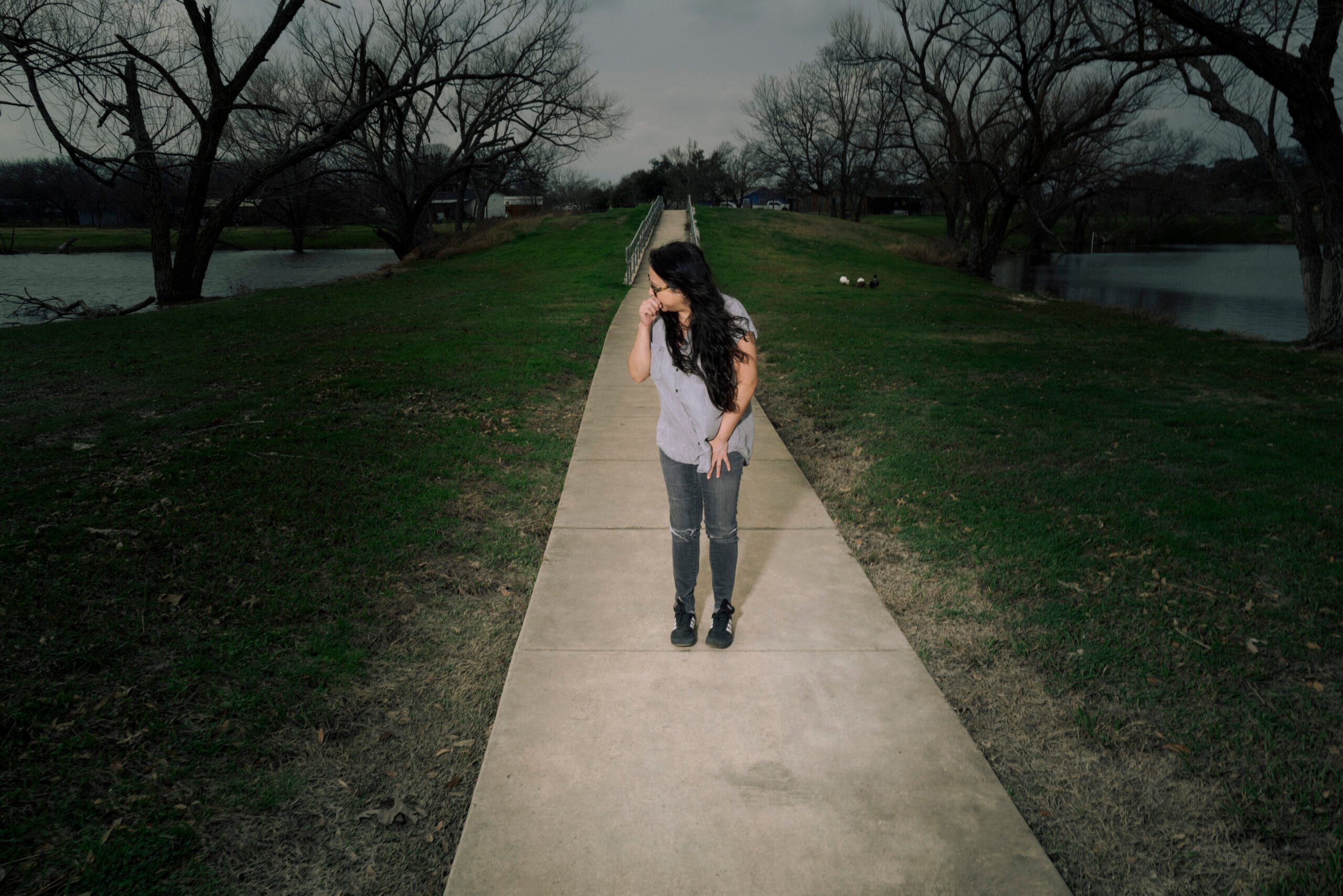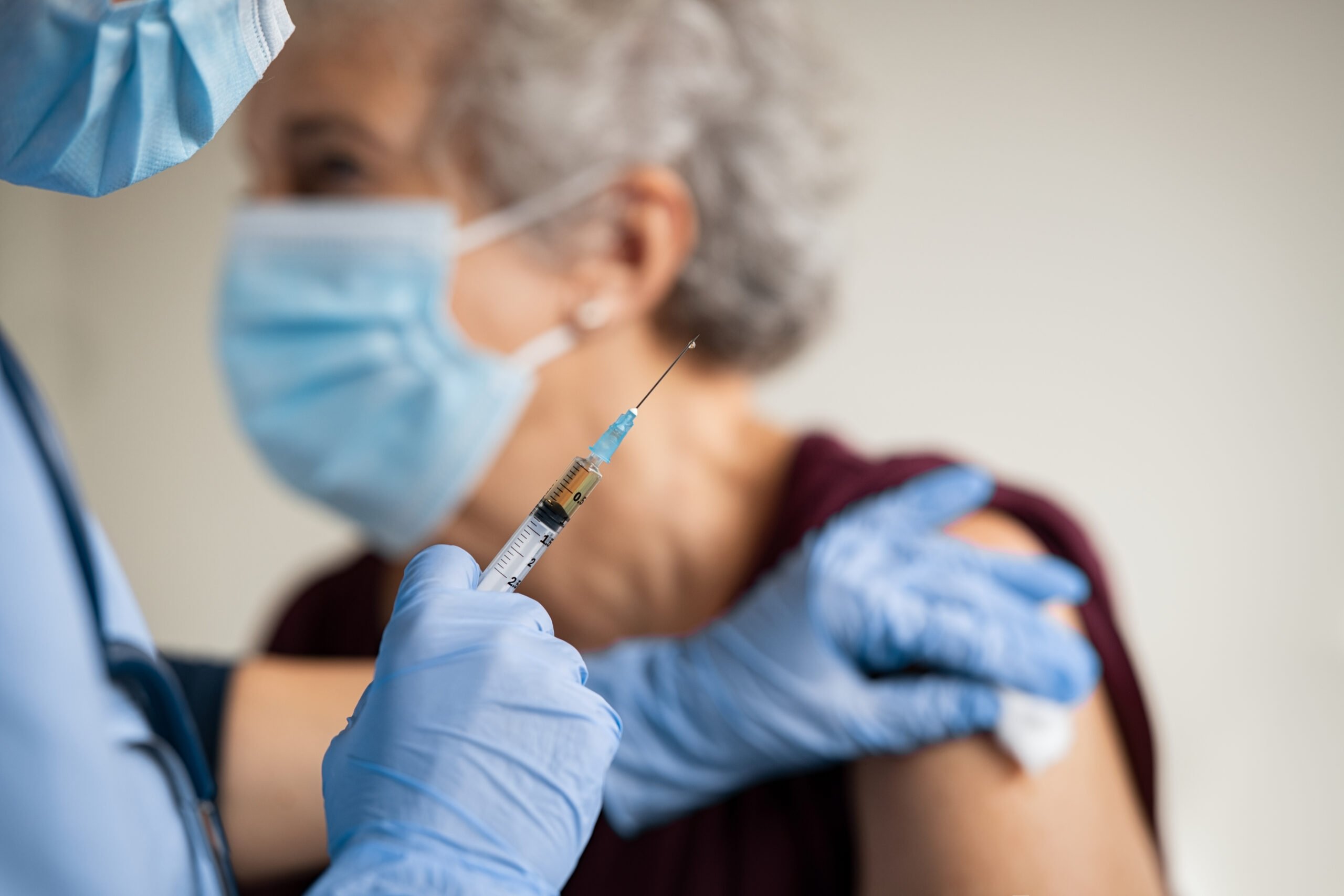Illustrations by Patrik Svensson
Gerald Nielson’s back pain has plagued him ever since the day in 1986 when he crashed his Trans Am while going 80 miles an hour. The accident broke his back in several places and left him with a constant, searing ache from his neck to his tailbone. The accident didn’t diminish his love of cars, though. He spent his life as a salesman, buying and flipping old Corvettes and Benzes from his home in Bluff Springs.
The pain grew less tolerable as Nielson entered his 40s, and in 2011, he asked his primary care doctor for help. The doctor referred him to Philip Leonard, a neurologist in central Austin. Nielson was in luck: Leonard was able to see him right away.
Nielson’s first few visits to Leonard, who was then 60, were unremarkable. Nielson had already been prescribed some risky medications: the opioid hydrocodone, the tranquilizer lorazepam, and the quasi-narcotic tramadol. Nielson begged Leonard for even better relief of his back pain, and Leonard gradually upped his medications, increasing Nielson’s hydrocodone dosage and later adding to his regimen the highly addictive drug oxycodone.
Drugs like oxycodone and hydrocodone have sparked an epidemic of opioid abuse, claiming hundreds of thousands of lives in recent years. They’re especially dangerous when combined with other medications. But in Nielson’s case, in the short term, the pills worked, and his pain went away. Early on, Nielson noticed that Leonard’s practice didn’t accept female patients, but he didn’t think much of it.
Nielson gradually became hooked on the medications, and his craving for them brought him back to Leonard’s office monthly for four years. Nielson says that over the years, Leonard began fondling him, eventually doing so at every visit. Leonard would bend Nielson over his exam table and grind against him. Over the course of several appointments, Leonard would touch his anus and his penis, Nielson says. At first, he used gloves. Then he stopped using them.
Nielson’s story is an extreme example of a disturbing power dynamic that has played out across the country, as more than 40 medical providers have been accused of coercing their patients for sex in exchange for addictive drugs in the past five years. Patients return to doctors who hurt them for an addictive medication, and predatory doctors know it.
Across the country, medical boards, which are tasked with overseeing doctors, have let problem providers slip through the cracks. The reason Leonard was allowed to see Nielson—and other male patients only—was because he had previously been accused of inappropriately touching 17 of his former female patients. (Leonard and his lawyers did not respond to phone calls and emails about this story.) By allowing Leonard to treat only men, the Texas Medical Board created a gaping loophole for Leonard, and he walked right through it.
Withdrawal from opioids can be like starvation. The addicted hunger for the next pain pill, forgoing all other desires and impulses. People who suddenly stop taking opioids may lie on the floor screaming, spew vomit and diarrhea, or sweat through their clothes. Long-numbed pain receptors suddenly come to life, causing profound agony. Nights become sleepless. Some people feel they’re on fire; others get a sensation of ants crawling under their skin. Doctors often say that addicted people who seek drugs aren’t trying to get high; they’re trying to get normal.
“I loved those pills so much,” Nielson told me, “but I hated them at the same time.” As we sat in his yard under a pecan tree, Nielson handed me a plastic garbage bag of spent pill bottles he keeps as evidence.
No matter how much medication he took, Nielson’s pain inevitably came back—opioids can cause a rebound effect called hyperalgesia—and Nielson began taking more and more, sometimes filling them at different pharmacies. Before long, he was taking five hydrocodone pills, three to four muscle relaxers, and some oxycodone every morning with a cup of coffee. Once, Nielson passed out on the drugs, then woke up to find his robe smoldering from his cigarette. His boyfriend at the time roused him, saying, “You’re on fire, baby.”
A few years into his time seeing Leonard, Nielson was in his yard one afternoon when the world clouded over. He collapsed and blacked out, waking up facedown underneath his sago palms. When he brushed his hand against his face, he felt the unmistakable warmth of blood. Nielson’s mother drove him to the hospital, where doctors told him he’d ruptured his right eye. After six surgeries, he’s still blind in it. Still, he would keep coming in to see Leonard, writing “Eye hurts bad” on his intake forms.
“Patients return to doctors who hurt them for addictive medication, and predatory doctors know it.”
Nielson says he told various friends and a counselor about the abuse while it was happening, but he feared police wouldn’t believe him. And every time he considered reporting Leonard, he came up against the dilemma faced by many addicted patients: How was he going to get more pills?
In June 2015, Nielson decided he couldn’t take it anymore. He called the police, telling them he couldn’t stop thinking about Leonard’s abuse. As he spoke to the officers, he tightened his hands into a fist and slammed them against his legs.
When the police were gathering information from Nielson, they wrote that Leonard had similar complaints against him in the past. Still, the Travis County District Attorney’s Office, then led by Rosemary Lehmberg, declined to prosecute Nielson’s case. The law at the time was that only penetration counted as sexual assault. The prosecutor assigned to the case, Dana Nelson, declined to press charges. Nelson is no longer with the office and would not comment for this story, but her office’s notes about Nielson’s case, according to Margaret Moore, the district attorney I contacted in 2019, read, “Only public lewdness? Refer to medical board.”
Leonard was born in Harlingen, just a stone’s throw from the Mexico border, learning Spanish before English, according to court records. He graduated from the University of Texas Medical Branch in Galveston (UTMB) and trained in Boston and London. At one point, he was president of the Texas Neurological Society.
Leonard opened up his solo practice in Austin in 1982, treating people with pain and other nervous-system ailments. Many of them had few other options: They had workers’ compensation claims or were on Medicare or Medicaid.
No one answered the door when I visited his squat, aging office, part of a complex of medical practices near the center of the city. But his website features a headshot of a smiling bearded man with thinning hair and aviator glasses above the description “Best neurologist in Texas.”
In August 2001, Cathryn Blue, a then-43-year-old dispatcher for a heating and air conditioning company in Austin, saw Leonard for a workers’ comp evaluation after she injured her back at work. Blue remembers there being something off about Leonard—he was wearing a dirty white coat and looked as though he hadn’t bathed in days. But she worried that walking out would ruin her workers’ compensation claim—very few doctors in Texas accept these cases because of the bureaucracy involved in getting paid, says John E. Collins, a Texas workers’ compensation attorney. So she stayed.
During the exam, Blue says, Leonard pulled her legs against his body and rubbed his erect penis against her. Later, he yanked her pants off, she testified in court.
Blue’s friend Carmen drove her home from Leonard’s office as Blue wept. “I feel like I’ve just been raped without the sex,” she told Carmen. Blue called the police and asked to speak to a female officer.
Several women who said they were victims of Leonard had come forward around the same time; some also had workers’ compensation cases. The pattern of behavior Leonard allegedly exhibited was also similar. One woman later alleged that Leonard would press against her with an erect penis, attempt to massage her breasts, and spank her. Another woman had claimed that Leonard fondled her genitals and breasts during a procedure. Others had complained of experiences that were strikingly similar to Blue’s: Women were told to get undressed; then, they said, Leonard would rub his penis on them or grope them. (In court and medical board records, Leonard denied all the charges against him.)
Blue was the first victim whose case went to trial, and despite the handful of allegations from other patients, she was the only one who testified. At the trial, Leonard’s defense attorney, Chris Gunter, focused on discrediting Blue. He claimed Blue had a long history of lying, starting arguments with her doctors and lawyers, and abusing the pain drug Demerol. The lawyer claimed she had bipolar disorder, anxiety, and paranoia; he said that her stories often shifted. The hard thing Blue felt against her leg, the defense attorneys said, was simply a cell phone. “She’s making it up,” Gunter said in his closing statement.
Leonard was acquitted in Blue’s case. In 2004, after yet another patient complained that Leonard had reached inside her panties and felt her vagina, the medical board found what they believed to be the best way to get Leonard to stop molesting patients: Keep him away from women. They restricted Leonard’s license such that he could treat only male patients for the next 10 years.
BECOME A MEMBER OF THE TEXAS OBSERVER
You can chip in for as little as $3 a month.
I told Rebecca Haw Allensworth, a Vanderbilt University law professor who has studied medical boards, about the unusual compromise in Leonard’s case—in which he was allowed to treat men but not women. She said it was a striking example of how medical boards “will do the very minimum to make sure this person doesn’t do that exact thing again.” Over the years, medical boards in Texas and elsewhere have occasionally sanctioned problem doctors by limiting the gender of patients the doctor can see. A 2020 analysis by the Austin American-Statesman concluded that most of the 80 Texas doctors found to have engaged in sexual misconduct in the past five years have been allowed to keep their licenses. Typically in these cases, the board simply limits the types of patients the doctor can treat or requires a chaperone during patient exams.
Lee Anderson, the physician who formerly served as the Texas Medical Board’s president, acknowledged in 2016 that “I am certain [Leonard’s] acquittal had something to do with softening the suspension” of his license. In other words, the medical board was reluctant to take serious action against him without seeing a conviction first.
At the time of Leonard’s acquittal, Blue remembers thinking, “He’s going to sexually assault a child or a man.”
Kim Farbo, the Austin detective assigned to Blue’s case, retired from the police force in 2010. As we sat on her sunny back porch, looking out over the unending pastures of Bastrop, she admitted that she failed some of the victims in her time as a detective, including Blue. She was working on 30 cases at a time, and it was hard to devote her full attention to each one. Leonard, she says, had a tendency to pick what law enforcement officials call “bad victims”—ones no one would believe.
Nielson, for instance, has a shoddy memory. He couldn’t remember which medications he had taken when or the exact year he hurt his eye—from his medical records, it appears to be 2014. When a police officer met him in a grocery store parking lot, he wrote in his report that Nielson couldn’t provide the dates when the assaults occurred but that he tearfully insisted he was telling the truth.
In his interview with police, Leonard defended himself by saying that Nielson complained of erectile dysfunction and said he had to touch his penis to diagnose him. (A few of Nielson’s intake forms with Leonard’s practice do have “impotence” marked as one of his symptoms, but Nielson told me he never talked about impotence with the doctor.)
Blue, too, presents a somewhat chaotic narrative. Her experience with Leonard coincided with a months-long struggle to obtain her workers’ compensation benefits, and sometimes the two battles get tangled together in her mind. She’s been diagnosed with bipolar disorder, and her reliability, as one of her doctors noted, “is poor.” She doesn’t feel as though she got justice, and the experience left her wounded and suspicious.
Farbo says these types of reactions are common among people with sexual assault trauma. She pantomimed tearing up a piece of paper and throwing the pieces in the air. “It’s all jumbled and it kind of comes out kind of crazy. And you’re going, ‘What the hell?’” she told me. The perpetrator, meanwhile, is often polished and ready. “I didn’t do it,” Farbo says, imagining a typical suspect. “We drank this. We ate that. We went into my house at 11:58 p.m.” Which one is a jury going to believe?

Sexual assault cases against doctors are further weakened by the fact that medicine involves inspecting the body and helping it function. A doctor’s appointment is one of the few times in adulthood when a stranger might see someone naked or touch their genitals. Defense attorneys can use this uncomfortable fact to make the illicit seem innocuous. A sizable chunk of testimony in Blue’s case was devoted to discussing whether it’s appropriate for a doctor’s groin to touch a patient’s knee during an examination or whether a doctor should ever handle a patient’s underwear.
At the time, Texas counted only penetration, not groping, as a serious sexual crime. The law changed in 2019, but non-penetrative sexual assault remains a misdemeanor—even if the perpetrator is a doctor. This is in contrast with some other states, where this type of predatory physician-patient contact is a felony. “A number of advocates and survivors tried to increase penalties for repeat offenders or physicians in the recent legislative session to no avail,” says Katherine Strandberg, a former senior policy adviser with the Texas Association Against Sexual Assault, which pushed for an increase in the groping penalty.
What’s more, some patients don’t report doctors’ impropriety until they’ve been abused for years. Some doctors convince patients that “treatments” are in their best interest, and that convincing is easier when the patient is addicted to something the doctors are dispensing at every visit. As the opioid epidemic has raged on, it’s become harder for patients to find doctors who are willing to prescribe them high levels of opioids. “A lot of victims said that even though [Leonard] did this creepy stuff to them, they kept coming back because he actually helped them,” Farbo told me.
This was true of victims of another neurologist, Ricardo Cruciani, who is accused of sexually assaulting 17 women under his care in Pennsylvania, New York, and New Jersey over at least a dozen years. I interviewed several women who said Cruciani demanded sex from them in exchange for prescriptions. “I started looking for other doctors, but at the same time I felt trapped because I was dependent on him for medications,” said one woman who requested anonymity because of the sensitive nature of the case. Another alleged victim, Tanisha Johnson, saw Cruciani for five years. She told me that if she tried to protest his advances, he would change the date on her opioid prescriptions, sending her into withdrawal. “I’ll have you crawling on the floor like a dog,” she remembers him saying. (Cruciani pleaded guilty to assaulting seven patients in Pennsylvania; he has pleaded not guilty to charges in New York and New Jersey and is awaiting trial. His lawyer declined to comment for this article.)
Stories told by Cruciani’s victims bear an unnerving resemblance to those of Blue and Nielson: a doctor slowly ramping up the sexual nature of the visits, the patients desperately distracting him to avoid getting groped, and a medical community that knew something was wrong but did nothing.
Predatory doctors often go on practicing because of the peculiar way they’re policed: by fellow doctors who have more training in medicine than they do in law. Doctors like Leonard tend to reign in their own fiefdoms; they don’t answer to business associates or bosses. One recent study found that 99 percent of doctors prosecuted for opioid-related offenses worked in private practice, “a work environment that is less strictly regulated and supervised than hospitals.”
Doctors do answer to medical boards, but the boards are made up of fellow doctors, who seem inclined to be forgiving of their peers. “They’re gonna make mistakes,” says Allensworth, the Vanderbilt law professor. And typically, “it’s gonna be a mistake in favor of the doctor. It’s hard to take your colleagues’ licenses away.”
Data suggests Texas’ enforcement system for doctors is relatively strong—it now ranks second in the Atlanta Journal-Constitution’s scorecard of how well states protect patients from predatory doctors. Delaware has the highest rating, in part because it has stronger requirements for colleagues and institutions to report physician misconduct. In Texas, prosecutors aren’t required to tell the medical board about investigations involving doctors, and the board sometimes finds out about the arrests of doctors through news reports. A March report from Public Citizen, a consumer advocacy nonprofit, found that 10 states are more aggressive about punishing doctors than Texas is.
Ultimately, bad doctors still slip through the cracks. One of the most thorough accounts of sexual abuse in the medical profession comes from the Atlanta Journal-Constitution, whose 2016 investigative report found that nationally, “of the 2,400 doctors publicly disciplined for sexual misconduct, half still have active medical licenses today.” In 2020, Public Citizen found that 36 percent of American physicians who were disciplined by state medical boards for sexual misconduct were allowed to keep their licenses. In Texas, too, abusive doctors go on practicing: In 2017, the Austin American-Statesman found that of the approximately 200 Texas doctors disciplined for sexual improprieties with patients between 1999 and 2016, about only 50 lost their licenses. Of the remaining 150 who were allowed to keep working as physicians, about half were still practicing. “The overall indication here is that medical boards rarely, rarely discipline physicians seriously,” says Azza AbuDagga, a health services researcher with Public Citizen. She and Allensworth said bad doctors are sometimes less likely to be punished when a state faces a doctor shortage, as parts of Texas do.
The system is essentially designed to protect itself: In A study of all 1,790 licensing boards in the united states, “nearly all of them are controlled by a professional holding a license issued by the board itself.”
In response to a request for comment about Leonard, a spokesperson for the Texas Medical Board wrote in an email that “the agency does not have more to add to justify decisions made under previous Board leadership some 17 years prior.” The spokesperson said the board has been more “proactive” about physician sexual misconduct recently.
In many states, patients may have trouble discovering their doctors’ shady pasts. Though Texas Medical Board actions are public, the National Practitioner Data Bank created by Congress to track misconduct by doctors is not available to the general public. Some countries’ medical systems are more transparent: In the United Kingdom, a simple website allows anyone to look up any doctor registered in the country to see what actions have been taken against them, along with a record of any hearing before a medical tribunal. (What’s more, in the United States, only one-third of the people who experience physician misconduct report it to a medical board.)
Sometimes, problem doctors are merely required to undergo further training or told to refrain from prescribing certain types of medications. Or they’re shifted over to patients with few other options. In the 1990s, a Texas doctor failed to diagnose a patient’s meningitis, rendered the patient brain-dead, and was then restricted by the medical board to practicing only in Texas prisons. Later, an inmate sued the doctor after a diagnostic failure caused him to lose his right testicle. Two-thirds of the doctors working full time at Louisiana state prisons had been disciplined by the state medical board, a 2012 Times-Picayune investigation found. In Texas, about 1 in 6 doctors and dentists who treat prisoners have had actions on their record by the medical or dental examiner board, according to a list provided through a public records request. Owen Murray, the vice president of Correctional Managed Care at UTMB, which provides medical services to prisoners, said that it’s worth noting that some of the infractions were minor administrative issues and that UTMB is not allowed to hire anyone with an active board restriction to work in prisons.
The system is essentially designed to protect itself: In a study of all 1,790 licensing boards in the United States, Allensworth found that “nearly all of them are controlled by professionals holding a license issued by the board itself.”
Instead, the people who wind up punished are the patients. After Nielson stopped seeing Leonard, he spent thousands of dollars buying pain pills on the street. Today, Nielson is single, lives with his mother on $734 in monthly disability payments, and rarely leaves his house. When we met, he was fretting that he couldn’t get his sick dog to the vet.
And after her case, Blue was diagnosed with post-traumatic stress disorder and became unable to go back to work. Panic attacks would blur her vision and send her heart pounding. She lost her house and moved into a camper on a friend’s property. Today, she manages a mobile-home park near Austin and takes care of her granddaughter.
In 2018, the Texas Medical Board revoked Leonard’s medical license, citing both his overprescribing of opioids and his alleged sexual impropriety. Leonard, defiant to the very end, petitioned the board to reinstate his license but was unsuccessful.
When he read a news article about the revocation, Nielson learned that Leonard had abused patients before—female patients—and that he had been restricted to seeing only male patients as a result.
Nielson looked up Blue, who was mentioned in the article, on Facebook. He messaged her, and the two have met up a few times. “I’m so sorry it happened to you,” Nielson told her. “This fucking asshole’s going to pay for what he did to us one way or another. Even if God has to do it.” Everyone else, after all, had gone easy on him.



